
Which teams have gotten better and worse during the off-season so far?
With trades and free-agent signings slowing down as we enter the second week of July, it's a a great time to assess how each team has done during the off-season.
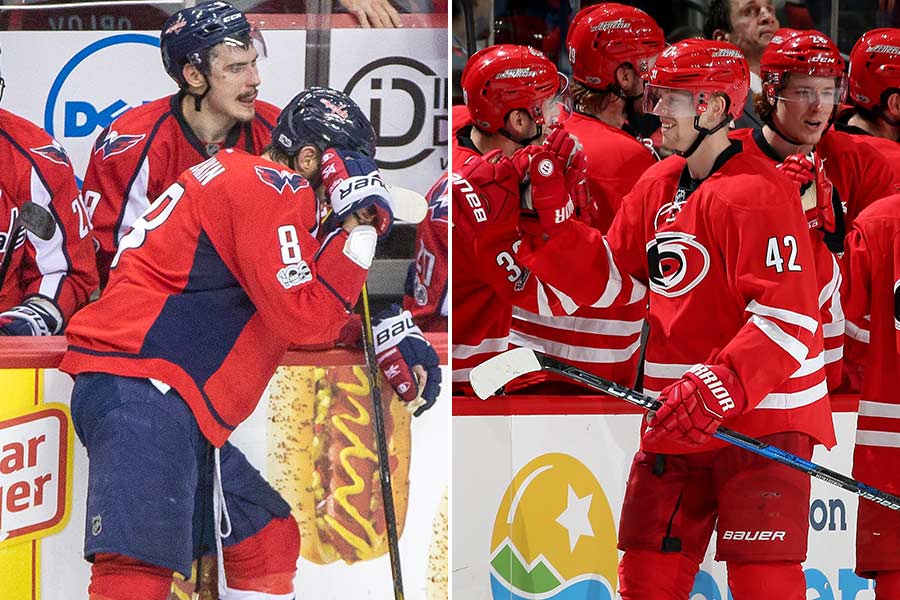 Which teams have gotten better and worse during the off-season so far?
Which teams have gotten better and worse during the off-season so far?Free agency day was a week ago and the deals have significantly died down since. It’s the end of silly season and the beginning of frugal season where most of the deals left will be cheap, cost-effective and far between.
Most teams aim to be better, others aim to cut salary, but after a week pretty much every team is usually done save for a few moves here and there. That's why one week in poses a great time to assess how each team has done during the off-season.
To do that we’re going to use our playoff model based on each player’s last three seasons of Game Score to see which teams added and lost the most value. There’s some weaknesses to acknowledge, like defensive play and usage, but overall it does a good job of assigning value to players as the model did reasonably well at predicting the regular season and playoffs last year.
This is also just based on signings and trades; we’re not going to include either of the expansion or entry drafts though those are important to keep in mind, too. Here’s how much better (or worse) each team got this off-season, as well as a closer look at the top and bottom three on the list.
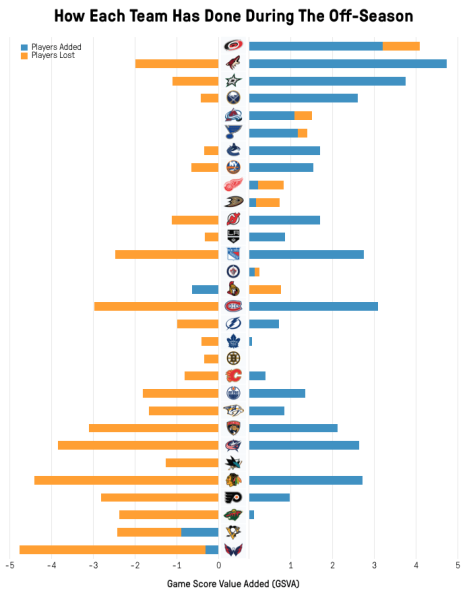
Who Got Better?
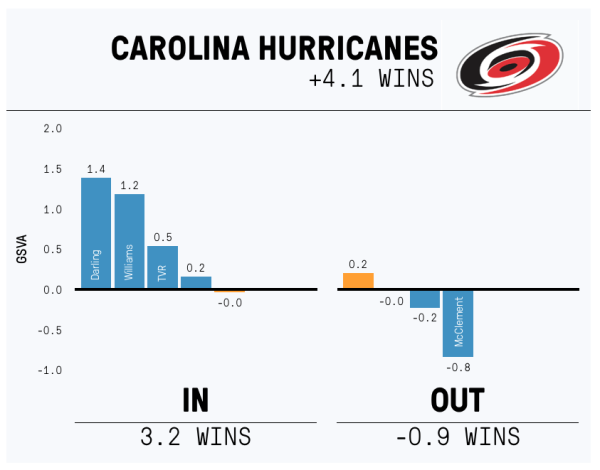
In terms of off-season winners, it seems as if a lot of people are sleeping on Carolina. I don’t believe any team has done a better job since the season ended.
The biggest move was adding Scott Darling who can be a legitimate No. 1 goaltender for them – if he can stay reasonably close to his career save percentage. Over the last three seasons, Darling ranks sixth in save percentage with a .923 over 75 games. That’s a really small sample size and we’ve seen numbers from other goalies tank once they get to Carolina, but Darling is still a great bet given what he’s shown so far. He should at least be better than Cam Ward, who has cost this team plenty of wins over the past decade.
Up front, Justin Williams is coming home and he’s still a very effective second line forward. Very few players dominate the run of play as much as he does. Marcus Kruger is a great defensive forward, while Josh Jooris should provide some decent depth. Then there’s Trevor van Riemsdyk, who should be a decent contributor to the bottom pair on defense, something this team struggled mightily with last season.
Those are really solid gets that make the team stronger, but what pushes Carolina over the edge is who they lost. Jay McClement was one of the worst 5-on-5 players in the league last season while Matt Tennyson and Ryan Murphy were part of the carousel on the bottom pair that just didn’t work. Eddie Lack just wasn’t good enough either. It’s addition by subtraction, and Carolina added nearly one win just from players they’re losing.
A couple of days ago, our own Ryan Kennedy talked about these very moves and said he believes the Canes can break their playoff drought next season. I’d have to agree with him and the math adds up. Carolina is a dark horse playoff team next season.
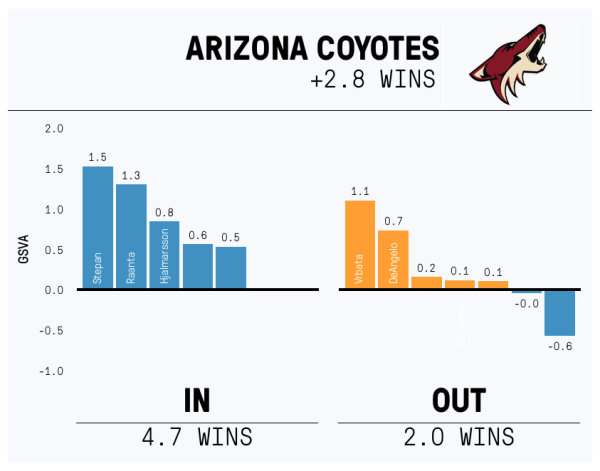
Arizona made some very shrewd deals and came out on top in each of them. Swapping Connor Murphy for Niklas Hjalmarsson, one of the league’s best defensive defensemen, with Chicago looks like a steal and trading the seventh overall pick (in a weak draft) with Anthony DeAngelo for Derek Stepan and Antti Raanta is another big time move that addressed a position of weakness. That’s three very good players at key positions that’ll add wins to the bottom line immediately.
That’s the plan right there: these moves were designed to move Arizona up the standings. But is it enough to join the playoff race? By my estimation, no, probably not. With everyone else that’s coming and going factored in, this team should be six points better next season. Add in a youthful injection of Clayton Keller and Dylan Strome, and they have potential to take a very big jump – just not a big enough jump that’ll push them into a playoff spot, though they should be closer than they’ve been in years.
That’s discouraging, but it does mean the days of being a laughingstock are likely over. The rebuild is done, the pipeline is stocked, and the Coyotes are ready for their climb up the standings. Things won’t be as immediately glorious as Toronto’s rise to power last season, but the Coyotes should see a big jump next season toward respectability in 2017-18.
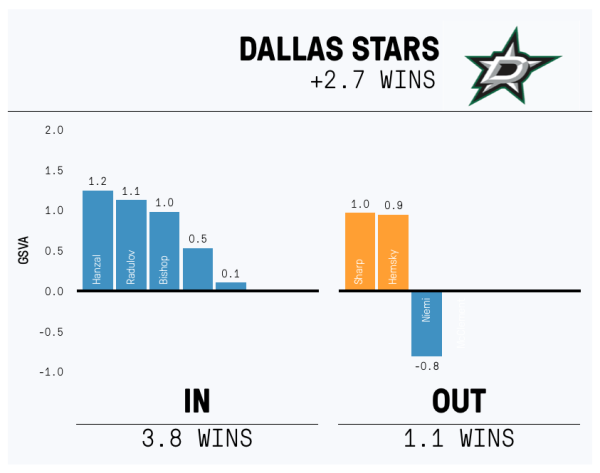
At this point the Dallas Stars probably have five “Off-season Champions” banners hanging from the rafters of American Airlines Center, and while that may be a point of pride for GM Jim Nill, it’s time for this team to live up to their potential. Their time to win is now.
Last year was a write-off. Dallas had some of the worst injury luck in the league and a goaltending tandem that was once again among the league’s worst. Is Ben Bishop the answer to their problems? By save percentage, it sure seems like it – he’s a lot better than Antti Niemi over the past few seasons – but it’s always important to remember that Dallas is a goalie graveyard. Kari Lehtonen used to be pretty good too, but his SP over the last few seasons has been ugly. There’s no guarantees with goalies, but new coach Ken Hitchcock should make the defensive systems a bit tighter. The addition of Marc Methot should help, too.
It wouldn’t be a Stars off-season party without adding some very good forwards and that’s the big reason to be high on their off-season. Alexander Radulov will look spectacular next to Tyler Seguin and Jamie Benn (please don’t ruin this for us, Hitch!) and Martin Hanzal is a supremely underrated shutdown center who can push play in tough minutes and is good for 40-50 points. He’s a huge upgrade over Cody Eakin who got crushed on the shot clock routinely.
With the West in complete disarray, Dallas made themselves a lot better on paper and should be back in contention next season. On paper. We’ve been fooled by the off-season champions before.
Who Got Worse?
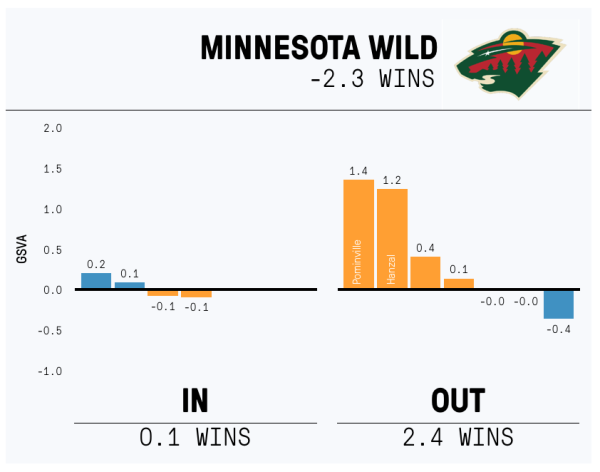
Minnesota looked like one of the better teams in the West last year, especially after it acquired Martin Hanzal. That move was the right play to put the Wild over the top, but it back-fired into a very disappointing first-round exit. Without resigning Hanzal along with some of their other losses, it looks like they’re going to fall a lot closer to the pack next season.
Since the playoffs, all we’ve heard was that they had to move a D-man and when they finally did it was for a very underwhelming return from Buffalo for Marco Scandella. That’s the cost of dumping Jason Pominville’s salary, but that high salary was still attached to a pretty good player.
The two forwards they got back aren’t nearly as good. Tyler Ennis can’t stay healthy and he’s far from the player he used to be before all these injury setbacks. He used to be good for nearly 50 points, but has just 24 over the last two seasons in 74 games. That’s about the same as Marcus Foligno’s scoring rate, too.
Last season Minnesota lacked star-power, but its forward depth made up for it – I’m not sure that’s the case anymore. The Wild took a big step forward in 2016-17, mostly thanks to Boudreau, but it seems like they’ll be taking a step back in his second season.
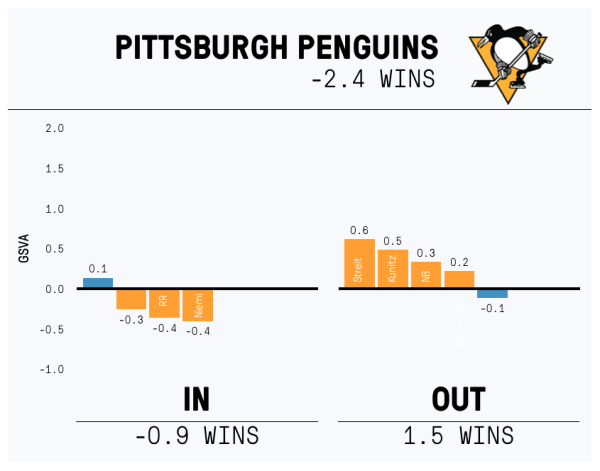
As is tradition, the Cup champs get worse. That’s the way it goes in a hard-cap league, but this feels a bit different than the usual order of business. The players Pittsburgh lost were expected, it’s the players they added that are a bit puzzling.
The big gaffe was adding Ryan Reaves at the expense of a first rounder, a price even Reaves couldn’t believe. The NHL is a confusing place where a bonafide top six talent like Marcus Johansson goes for a second and third, but a fourth liner – who’s probably below replacement level – goes for a first. Over the last three years, Reaves’s average Game Score is 0.07, which is better than just six other forwards who’ve played all three years. The reasoning was even more curious as the team that just won two Cups without any muscle apparently got pushed around too much? Most teams only dream that they could be pushed around into two straight Cups.
Then there’s the Marc-Andre Fleury replacement, Antti Niemi, who’s been one of the worst goalies in the league for the last two seasons. In that time he’s sporting a .900 SP, better than only one goalie, Jonas Hiller, who isn’t even in the league anymore. Give Niemi 20 games next year and he likely costs Pittsburgh about one point in the standings.
The reigning Cup champs are not exempt from criticism when their moves are questionable, but the thing is, none of this really matters. When healthy, no other team is even close to Pittsburgh’s level, even after a terrible off-season. That’s especially true with the great demise of the only team that could really challenge them...
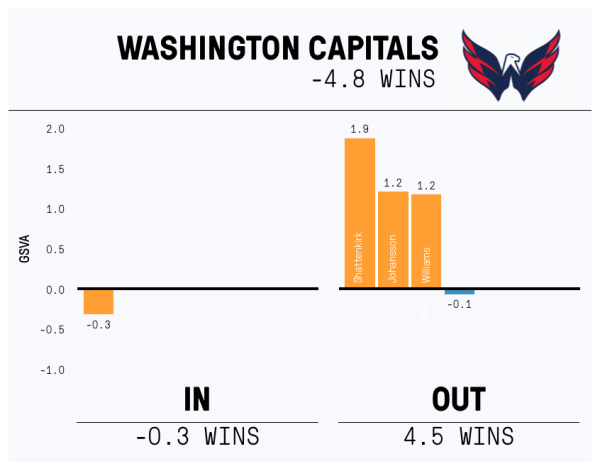
Who else would it be? Of course it’s Washington as the team that lost the most. Even if you don’t count Kevin Shattenkirk, the Caps would still be the biggest losers here.
In Marcus Johansson and Justin Williams they lost two-thirds of a second line, and while there are internal replacements, they won’t be nearly as effective as those two. Alzner played some tough shutdown minutes for the Caps last year, and while he wasn’t all that effective in them (his relative Corsi was one of the league’s worst for defensemen), his loss creates a big hole on the left side – especially considering they lost Nate Schmidt in the expansion draft. And their only addition so far is Devante Smith-Pelly who is among the worst possession players in the league, not to mention he can’t score either (I’m not really sure what he does out there actually).
It’s been a bleak summer for Caps fans. They've endured all the cap casualties that usually come with a Cup victory, except without the Cup victory. Last year was The Year, and they blew it. This is the cost. They’re nearly 10 points worse than that team that blew it, so their chances next year are even slimmer. But all hope isn’t gone. That was a really good team, and while five wins is a big hit, it’s survivable for a team that was as good as Washington.
Still, things might only get worse. They committed a lot of future money over the next eight seasons, signing T.J. Oshie and Evgeny Kuznetsov to big money deals.
Those deals were the reason they lost so many players and while signing Kuznetsov was obviously necessary, if a little rich, I’m not sure you could say the same thing for Oshie. He’s a very good player, but he had a career high shooting percentage (nearly 10 percent above his career average) at age 30 – that’s exactly the kind of player you walk away from, not give eight years to.
That’s easier said than done, losing Oshie would’ve created a big hole in the lineup, but it also would’ve given the team more flexibility and allowed Washington to not lose as many key pieces. The combined loss of Johansson/Williams is bigger than if it was just Oshie.
They earned their deals and Washington made their choice, but it only makes the cap tougher to maneuver over the next few seasons, with a wide open window slowly closing every year. This team couldn’t beat Pittsburgh last year or the year before that. The job is going to be even harder next season.
THE LATEST HOCKEY NEWS PODCAST: